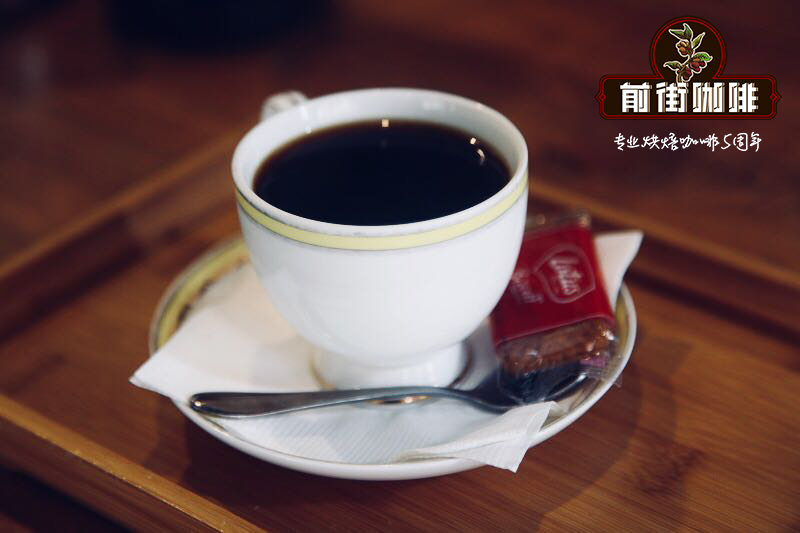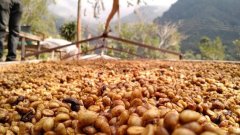Japanese coffee history, culture and customs the world's first coffee chain, Old S ã o Paulo Cafe

Japanese Coffee History:
The time when coffee spread to Japan is speculated that in 1641, during the Yuanlu period in the middle of the Edo period, it was brought to Japan by the Dutch store on the island of Nagasaki. At that time, Japan implemented a strict policy of locking up the country and most of the people who could come into contact with foreigners were servants (officials), merchant interpreters (translators) and tourist girls (geisha).
Until the Records of Zunberu's Journey to Japan in 1776, it was recorded that two or three interpreters could finally understand the delicacy of coffee. In 1804, the author of Daejeon Shushan described that he was invited to drink coffee on a red-haired ship. The beans were fried black and powdered and mixed with white sugar. Its bitter taste, smell and bitterness made it impossible to adapt. From the above two paragraphs, we can see that coffee was introduced into Japan for nearly 200 years. The Japanese have not been able to get used to, accept and popularize this European drink.
In the middle of Meiji, Hongji Nest was set up in Hashi Komachi, Japan, and provided authentic French cuisine, foreign wine and French-style coffee. At that time, the founding members of the literary magazine Aung, Shigei Kitahara, Ishikawa Woodpecker, Kwangtaro Takamura, Haruo Sato and Hefeng Nagai. Others use the "Hong's Nest" as a monthly gathering place, while the "Hong's Nest" is like a social place for literati gatherings, and cafes also form a salon culture. Driven by salon culture.
From the Meiji era to the Taisho era, many cafes were opened one after another. at that time, cafes became social places for literati and literary youths. In their heyday, more than 20 cafes were set up, and their prices were also accepted by the public. Such salon culture is the most important springboard for the popularity of coffee in Japan.
Although many coffee lovers were added during the Taisho period, and the beginning of the Showa era was more accepted and loved by the public, during World War II, coffee was called an "enemy drink" and stopped being imported. Coffee once disappeared in the life of the Japanese with strong patriotism; after the end of World War II, coffee was loved by many Japanese people as "messengers of peace." After entering the Pingcheng era, the demand for coffee has also increased with the popularity.
Japanese coffee culture and customs:
Japan has a unique ability to absorb and digest other cultures, and can always turn foreign cultures into localization. Japanese-style cafes have the characteristics of mixed culture. The Japanese-style cafe is unique in design, easy in decoration, functional and multicultural. It is also a place for learning, talking and socializing.
Japan is a nation that loves green tea. although it accepts coffee, it is still sold in the shop, and young people who love coffee can not put it down. Like the original flavor of Japan, the most popular individual coffee, especially hand-brewed coffee, such as siphon, mocha pot, follicle type.
The first coffee chain in the world
The world's first coffee chain was not Starbucks in Seattle, but the Caf é Paulista opened by Shuiye Dragon in 1909. Mizuno was the first generation of Japanese immigrants to Brazil. At that time, Japanese immigrants mainly went to North America to help reclaim wasteland in the west. The diligence of Japanese immigrants spread to the ears of the Brazilian government, hoping to introduce Japanese immigrants to Brazil to reclaim wasteland.
About 10,000 Japanese immigrants arrived in Brazil in the late 19th century, when the price of Brazilian coffee plummeted, and Shuiyolong seized the opportunity of the times and advised the Brazilian government to promote beans to Japan.
Shuiye Dragon got a large number of free coffee beans from the Brazilian government and opened the first "Old S ã o Paulo Cafe" in Badingmu, Ginza. Because the coffee beans are quite cheap, the coffee is not expensive, attracting many college students and young intellectuals to discuss and stay here.
The coffee shop is not only a gathering place for men at this time. In addition to serving as waiters, educated female literati also go in and out of the coffee shop with men. There is also a hostess department on the second floor of the Old S ã o Paulo Cafe, where editorial meetings of Aoki, Japan's first feminist literary magazine, were often held in 1911.
Old S ã o Paulo Cafe later opened branches in major cities in Japan, becoming the world's first coffee chain. Due to the opening of the Japanese market, on the one hand, the price of coffee in Brazil rebounded and saved the coffee industry in Brazil; on the other hand, coffee beans in Brazil were no longer controlled by Western powers, and Japan also had a stable source of coffee beans.
Important Notice :
前街咖啡 FrontStreet Coffee has moved to new addredd:
FrontStreet Coffee Address: 315,Donghua East Road,GuangZhou
Tel:020 38364473
- Prev

Yega Shirley Felix Coffee Bean processing Plant featuring Red Cherry Project Coffee beans
Rico Coffee Bean processing Plant is located in the town of Cochel, which is in the Yega Sheffield area, and because of this, its coffee has a charming floral flavor. The name Reko comes from the steep Reko mountain on the Cochel hill. Reko has the meaning of challenge in the original text of Ethiopia. It brings out the meaning that it is not easy to climb Mount Reko.
- Next

What is cold coffee? What are the factors that affect cold coffee?
What is cold coffee? Recently, there has been a significant increase in the demand for Lengcui coffee in the global coffee market, which has also brought some ambiguity in the concept of Lengcui coffee and areas to be developed. The so-called cold-extracted coffee refers to a way of extraction, not a cold drink. Cold-extracted coffee is clearly defined as extracting coffee with low-temperature water, but that doesn't mean you can't.
Related
- Beginners will see the "Coffee pull flower" guide!
- What is the difference between ice blog purified milk and ordinary milk coffee?
- Why is the Philippines the largest producer of crops in Liberia?
- For coffee extraction, should the fine powder be retained?
- How does extracted espresso fill pressed powder? How much strength does it take to press the powder?
- How to make jasmine cold extract coffee? Is the jasmine + latte good?
- Will this little toy really make the coffee taste better? How does Lily Drip affect coffee extraction?
- Will the action of slapping the filter cup also affect coffee extraction?
- What's the difference between powder-to-water ratio and powder-to-liquid ratio?
- What is the Ethiopian local species? What does it have to do with Heirloom native species?

